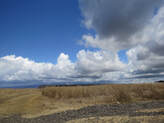 we definitely know our destination. we definitely know our destination. I have a fascination with words, their etymology, usage, and meaning. I suppose it is because I have always been a voracious reader who as a child often read books with a dictionary nearby. It isn’t surprising, then, that I recently came across a word that attracted my attention, mostly because I was intrigued as to how to use it in a sentence: ‘coddiwomple,’ a verb. A bit whimsical sounding, it is English slang meaning “to travel purposefully toward an as-yet unknown destination.” A reflection ensued, which led to the realization that to coddiwomple is anything but what the Christian life is about. That is, although we do travel purposefully toward our goal, (and the road is not always easy), we definitely know our destination. We are journeying through life, with its ups and downs, to arrive in Heaven, hopefully growing in holiness on the way. We even have a roadmap to guide us there, given through the teaching of Jesus. That is not to say that we will always know exactly what the next step to take may be; rather, it means that we will need to put all our trust in the One we follow, Jesus. It will take prayer, discernment, and a desire to do the best we can to love, and therefore, to glorify Him. Thus, we do not coddiwomple, but instead we proceed with purpose. 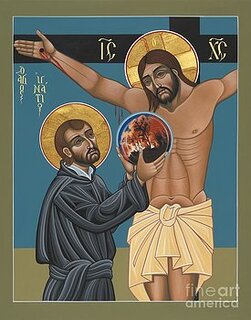 a response of love to Him a response of love to Him St. Ignatius of Loyola (whose feast day is July 31) composed The Spiritual Exercises to help people learn how to discern and also grow in relationship with God. The Exercises begin with the Principle and Foundation which was designed to help the retreatant reflect upon his or her journey and to commit more deeply to it: to come into a more intimate relationship with the Lord so that we might live out the purpose for which we were created as a response of love to Him. The Principle and Foundation basically states that everything is meant to help us grow in holiness and that which hinders this growth needs to be let go. This statement guides us to understand that we are to prefer nothing specifically other than that which is for the greater glory of God, and thus to find great freedom. However, it is not meant to be utilitarian; rather, the point is to begin seeing that all is gift, to recognize God's presence more readily, to experience His love more deeply, and to help others grow through our service to them. St. Ignatius would not have put it quite like this, but our journey is not a coddiwomple. Rather, we have a purpose which is our own unique call to discipleship and our destination is the Kingdom of Heaven. 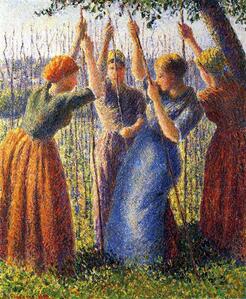 we have a purpose no matter how insignificant we think it is we have a purpose no matter how insignificant we think it is This means we must accept that we have a purpose no matter how insignificant we think it is, and that we also recognize that our purpose includes others as we share the Good News in word and deed. To live the gospel message requires that we continually examine specifically how we are to contribute to the building of the Kingdom. This examination is done in our prayer and reflection; the time spent in this way helps us become more attentive in recognizing how the Holy Spirit moves within us, which in turn encourages growth in trusting God. It moves us to deeper intimacy and love of God so that our desire is to follow Him without reserve. A good example is Mary the Mother of Jesus, who spent her life pondering many things within her heart; in her total commitment and love for God she prayed and reflected upon the many mysteries and difficulties she faced in order to know how to respond. It is why she had the wisdom to know when to let go of Jesus so that He could begin His public ministry, as she did at the wedding in Cana when she told Him there was no wine. Her ‘sinlessness’ did not give her wisdom; God did, and He did it in response to her prayer and her desire to listen closely even when she did not understand. 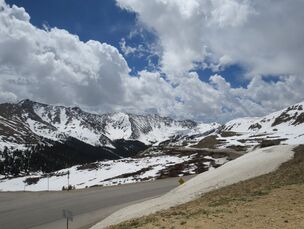 the destination is to arrive at the Kingdom of Heaven the destination is to arrive at the Kingdom of Heaven As the Principle and Foundation states, our purpose is in our own unique way “to praise, reverence, and serve God and by this means to attain salvation.”* The road consists of whatever helps us to praise and serve God, and the destination is to arrive at the Kingdom of Heaven. “All things created are to help us to attain our purpose;”* in other words, we must discern the correct usage of things, and to let the Holy Spirit help us to order all things to God. The details of how this will be are unknown, but the destination is sure. There is no ‘coddiwompling’ here; instead, doing all things for the greater glory of God is the road which leads to Heaven. As St. Ignatius knew, we will make mistakes, sometimes misinterpreting what we should do, or not recognizing the way to proceed; but if so, we always can, and indeed, must, return to the journey, asking for the graces we need so that we can grow in holiness and love for the Lord, building up the Kingdom here on earth as we proceed toward our heavenly home. As we grow, as we journey with our particular purpose, joined to the work of the Christian community, we will come to know more clearly the depth of God’s love for us. We do not coddiwomple, but rather, we rejoice in the gift of Heaven to which we set our faces resolutely, as Jesus did when He directed Himself to Jerusalem. (Luke 9:51) 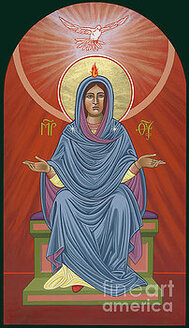 Intercede for us! Intercede for us! May we call upon the intercession of St. Ignatius and the Blessed Virgin Mary when we need help with the process of discernment! May we grow in the freedom to let go of all that hinders us on the journey! And may we learn to recognize the movements of the Holy Spirit better each day! Let us meet in the Heart of Jesus! Peace! ©Michele L. Catanese * The Spiritual Exercises of St. Ignatius Loyola, paragraph 23, Principle and Foundation. Images: 1. My photo, walking trail in Palo Duro State Park, Canyon,Texas. 2. Icon, St. Ignatius and the Passion of the World in the 21st Century, by Fr. William Hart McNichols. This icon depicts a vision St. Ignatius experienced during prayer in which Jesus offered him the world in flames as a way of giving him his mission. If you are interested in obtaining a copy of this you can find this at https://fineartamerica.com/featured/st-ignatius-and-the-passion-of-the-world-in-the-21st-century-194-william-hart-mcnichols.html 3. Painting, Peasant Women Planting Stakes, by Camille Pissarro (1891) 4. My photo, the sky and mountains at Loveland Pass, Colorado. (Continental Divide) 5. Icon, The Blessed Virgin Mary, Mother of the Church, by Fr. William Hart McNichols. You can find this icon at https://fineartamerica.com/featured/the-blessed-virgin-mary-mother-of-the-church-william-hart-mcnichols.html Note: In compliance with GDPR rules, I wish to make it clear that I do not gather any information on any of my readers at any time. Comments are closed.
|
Heart Speaks to Heart
|

 RSS Feed
RSS Feed
